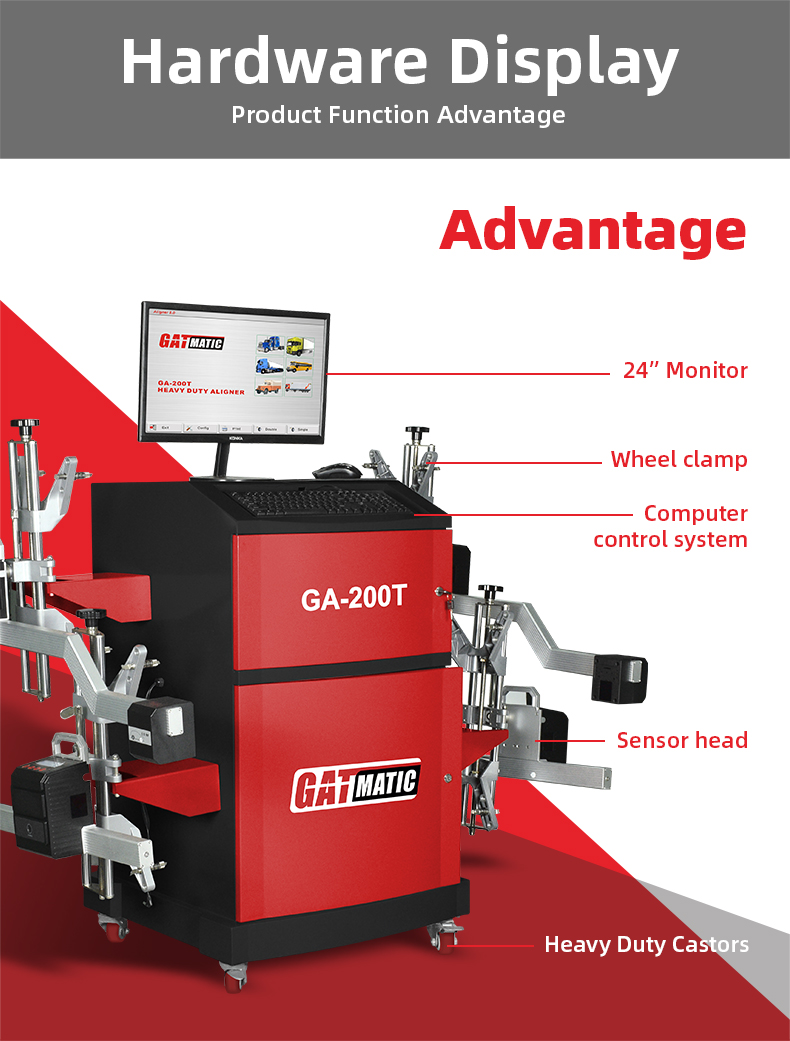Do trucks need 2 or 4-wheel alignment?
When it comes to the maintenance of your trusty old truck, there’s a lot to consider. From regular oil changes to tire rotations, it’s essential to keep your vehicle in tip-top shape for safe and efficient operation. One question that often arises is, “Do trucks need 2 or 4-wheel alignment?” This may seem like a straightforward query, but the answer can be a bit more complex than you might think. In this article, we’ll dive deep into the world of wheel alignments for trucks and explore why it’s essential, the different types of alignments, and when each is needed. So, fasten your seatbelt and let’s get rolling!
I. Why Wheel Alignment Matters for Trucks
Before we delve into the specifics of 2-wheel and 4-wheel alignments, it’s crucial to understand why proper alignment is so important for your truck. Your truck’s wheels are the only part of the vehicle that comes into direct contact with the road, and how they interact with the surface can have a significant impact on several key factors:
1. Tire Wear
Misaligned wheels can lead to uneven tire wear. This means that some parts of your tires will wear out faster than others. Uneven tire wear can result in premature tire replacements, costing you more money in the long run.
2. Handling and Safety
When your truck’s wheels are not properly aligned, it can affect its handling and stability. You may notice that your truck pulls to one side or feels less responsive when you turn the steering wheel. This can compromise your safety and the safety of others on the road.
3. Fuel Efficiency
Improper wheel alignment can also decrease your truck’s fuel efficiency. When the wheels are not aligned correctly, your engine has to work harder to overcome the resistance, which leads to increased fuel consumption. With rising fuel prices, this is something no truck owner wants.
4. Suspension Wear
Misaligned wheels can put extra stress on your truck’s suspension components. Over time, this can lead to costly repairs or replacements of parts like struts, shocks, and control arms.
Now that we’ve established the importance of wheel alignment, let’s address the central question: Do trucks need 2 or 4-wheel alignment?
II. Wheel Alignment: What Is It?
Definition
A 2-wheel alignment, also known as a front-end alignment, involves adjusting the alignment of only the front two wheels of your truck. This type of alignment is typically recommended for trucks with a front-wheel-drive (FWD) configuration.
When Is It Needed?
1. Normal Wear and Tear
In most cases, a 2-wheel alignment is suitable for trucks that have undergone normal wear and tear. If your truck doesn’t exhibit any unusual handling issues and you’ve been following a regular maintenance schedule, a front-end alignment is often sufficient.
2. Steering Problems
If you notice that your truck’s steering wheel is off-center or it tends to pull to one side when you’re driving on a straight road, it’s a sign that you might need a 2-wheel alignment.
3. Tire Replacement
Whenever you replace the front tires of your truck, it’s a good idea to get a 2-wheel alignment. This ensures that your new tires wear evenly and that your truck handles properly.
Advantages of 2-Wheel Alignment
- Cost-effective: 2-wheel alignments are generally less expensive than 4-wheel alignments.
- Quick turnaround: The process is quicker since it only involves adjusting the front wheels.
- Suitable for specific configurations: Ideal for front-wheel-drive trucks.
Limitations of 2-Wheel Alignment
- Limited coverage: Only addresses the front wheels, leaving the rear wheels unadjusted.
- Not suitable for all trucks: If your truck is rear-wheel-drive (RWD) or all-wheel-drive (AWD), a 2-wheel alignment may not be enough.
III. Wheel Alignment: The Comprehensive Option
Definition
A 4-wheel alignment, also known as an all-wheel alignment, includes adjustments to all four wheels of your truck. This type of alignment is more comprehensive and is typically recommended for trucks with rear-wheel-drive (RWD), all-wheel-drive (AWD), or four-wheel-drive (4WD) configurations.
When Is It Needed?
1. Irregular Tire Wear
If your truck exhibits irregular tire wear on both the front and rear tires, it’s a clear indication that a 4-wheel alignment is necessary. This ensures that all four tires wear evenly and last longer.
2. Handling Issues
If your truck feels unstable, drifts to one side, or you experience vibrations while driving, it’s a sign that you should consider a 4-wheel alignment. These issues can indicate misalignment in both the front and rear wheels.
3. Suspension Repairs
After significant suspension repairs or component replacements, it’s advisable to get a 4-wheel alignment. This ensures that your truck’s wheels are properly aligned with the new suspension parts.
Advantages of 4-Wheel Alignment
- Comprehensive alignment: Addresses all four wheels, promoting even tire wear and optimal handling.
- Suitable for various configurations: Ideal for RWD, AWD, and 4WD trucks.
- Improved stability: Enhances your truck’s stability and performance.
Limitations of 4-Wheel Alignment
- Higher cost: 4-wheel alignments are generally more expensive than 2-wheel alignments.
- Longer process: Adjusting all four wheels takes more time compared to a 2-wheel alignment.
- Not always necessary: For trucks with front-wheel-drive and no significant handling issues, a 4-wheel alignment may be overkill.
Conclusion
So, do trucks need 2 or 4-wheel alignment? The answer depends on various factors, including your truck’s configuration, the presence of handling issues, and your budget. While a 2-wheel alignment is suitable for front-wheel-drive trucks and can be cost-effective, a 4-wheel alignment offers a more comprehensive solution, addressing all four wheels and promoting even tire wear.
Remember that proper wheel alignment is essential to ensure your truck’s safety, handling, and overall performance. Ignoring alignment issues can lead to costly repairs and compromises in fuel efficiency. Regularly checking and addressing alignment problems will not only extend the life of your tires but also contribute to a smoother and safer driving experience.
So, whether you’re cruising in a sleek front-wheel-drive truck or conquering the off-road terrain with a rugged four-wheel-drive beast, keeping your wheels properly aligned is a must for every truck owner. So, schedule that alignment appointment and keep your truck rolling smoothly down the road!
(FAQs):
Now that we’ve covered the basics of 2-wheel and 4-wheel alignments, let’s address some common questions that truck owners often have:
Q1: How can I tell if my truck needs an alignment?
A1: Look out for signs like uneven tire wear, steering wheel off-center, pulling to one side, or handling issues. If you notice any of these, it’s time to consider an alignment.
Q2: Is a 4-wheel alignment always better than a 2-wheel alignment?
A2: Not necessarily. A 4-wheel alignment is more comprehensive but comes at a higher cost. If your truck is front-wheel-drive and exhibits no significant handling problems, a 2-wheel alignment may be sufficient.
Q3: How often should I get a wheel alignment for my truck?
A3: It’s recommended to check your truck’s alignment every 6,000 to 10,000 miles or as specified in your vehicle’s owner’s manual. However, if you notice any alignment-related issues, don’t wait for the recommended interval—get it checked promptly.
Q4: Can I do a wheel alignment at home?
A4: While some enthusiasts attempt DIY alignments, it’s best to leave this job to the professionals. Wheel alignment requires specialized equipment and expertise to ensure it’s done correctly.
Q5: How much does a truck wheel alignment cost?
A5: The cost of a wheel alignment can vary depending on your location, the type of alignment needed (2-wheel or 4-wheel), and the service provider. On average, a 2-wheel alignment is less expensive, ranging from $50 to $75, while a 4-wheel alignment may cost between $100 and $150.
Q6: Can I ignore wheel alignment if my truck seems to drive fine?
A6: Ignoring alignment issues can lead to uneven tire wear, reduced fuel efficiency, and potential safety hazards. It’s best to address alignment problems promptly, even if your truck appears to drive fine.
Describe Your Needs In Detail!
We will carefully evaluate your needs and give professional solutions.



